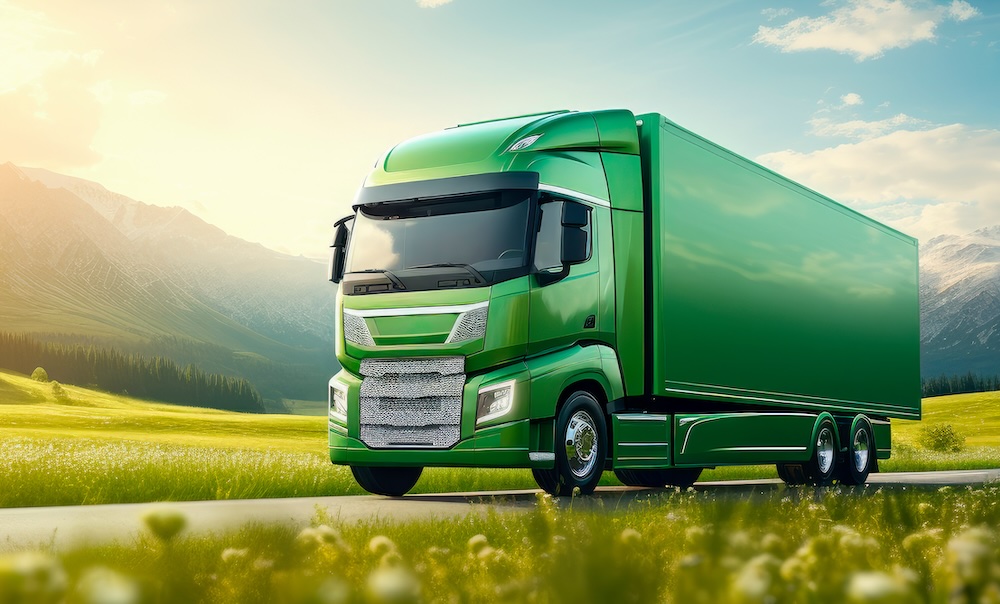 John Fagan UKIMEA Transport Leader, Arup
John Fagan UKIMEA Transport Leader, Arup

Over the last few years, we have seen dramatic disruptions to global freight and logistics, from the pandemic to geopolitical conflict, through to natural disasters causing devastation in some communities across the globe.
On top of this context, global transition to net zero emissions is firmly on the agenda, and it is clear that a fundamental shift in freight and goods movement is inevitable. But what will this look like in practice, and what changes are needed in the industry to decarbonise in line with targets?
Arup’s recent report, Future of Goods Movement, highlights systemic change across global supply chains, logistics operations and goods transport as the transition to net zero emissions, new patterns in consumption and manufacturing, and increased need for resilience reshapes all aspects of society – from energy to industrial materials and even food systems.
This complex transition could bring tremendous risks if not managed carefully. Across relevant industries it’s crucial to consider the possibility of stranded assets, obsolete workforces and sacrificing global living standards. But done correctly, the path to sustainable logistics can deliver more resilient, economically thriving and inclusive societies. Realising this potential will require holistic thinking, collaboration and proactive adaptation - supported by long range modelling and comprehensive data analysis.
The decisions we take in the years ahead will define outcomes for generations as we build the supply chains of the future. Now is the time for industry and government to work together to steer these converging transformations. To do so, we must look at the key trends identified in the report. Visible shifts towards more local supply chains require considering; for example what are the infrastructure and policies required to support resilience with this change?
An increase in overconsumption and waste needs to be managed – is there new technology upcoming that can do this? To effectively manage these potential transitions, we must look at building greater resilience and agility into supply chains and freight transport infrastructure through more integrated planning and long-term strategy. Comprehensive policy and investment decisions which consider the possibility of major future changes are necessary to ensure the goods movement system in place can respond to oncoming disruptions without costly consequences or failure.
Managing overconsumption and waste
There is an urgent need to tackle overconsumption and transform waste management systems on a global scale to reach net zero. Curbing the overproduction and excessive transport of goods –especially for items such as perishable food – would substantially reduce logistics volumes and pressure on supply chains. Major opportunities exist to build reusability, repairability, and closed loop recycling into supply chains, product designs, and customer experiences – dropping the wasteful linear economy model of take, make, discard. For instance, packaging redesign enabled by digital watermarks and blockchain tracking improves both recyclability and traceability. Fulfilment models such as refill stations and returnable containers are also gaining popularity. By changing consumption patterns in this way, logistics and freight will become more efficient, enabling a shift to more sustainable ways of working. Managing demand is as important as managing supply.
Building resilience through technology
Building resilience against intensifying climate change risks will become increasingly important, while also taking in to account economic and social disruptions. Recent supply chain shocks have highlighted the fragility of over-optimised logistics and the urgency of adaptation measures. Arup’s report suggests resilience measures like supplier diversification across geographies, business transparency through open and sustainable data sharing, strategic redundancy in inventories and routes, and physical infrastructure hardening are now crucial. Core organisational capabilities like network modelling, scenario analysis, risk monitoring, and operational agility must also be significantly enhanced.
Technology will be key to building this resilience by enabling a shift towards real-time, predictive supply chain capabilities due to innovations including AI, automation, electrification, control towers and digital twins. It will also be essential to increasing the energy efficiency of business delivery models. For example, in warehousing and distribution centres, robotic goods-to-person systems, automated storage and retrieval and autonomous mobile robots are driving incredible productivity gains, enabling facilities to handle surging e-commerce volumes with reduced labour requirements.
On the road, self-driving trucks are already being piloted for long-haul routes to address driver shortages and improve safety. But this shift requires partnerships beyond immediate suppliers to manage risks holistically across entire supply webs. If we can manage this balance, we will ensure our supply chains are prepared for the volatility to come.
Supportive infrastructure and policy
Evolving supportive infrastructure networks and forward-looking government policies will provide critical foundations to enable sustainable logistics advancement. Introducing the necessary technology will not be possible without policy and regulation that enable innovation and new delivery business models, planned for through aligned public and private investment. A coherent strategy across the supply chain will be vital – and it starts with government policy. By actively shaping infrastructure and policies today for the systems of tomorrow, governments can unlock technological benefits, accelerate decarbonisation and support companies, underpinning resilient economies.
From globalisation to localisation
The economic and manufacturing rise of Asia – with China's dominance and Southeast Asia's growth – alongside nearshoring trends, fundamentally changed global trade relationships, manufacturing locations, and logistics flows between regions. Now, however, we are seeing a shift back to more localised supply chains. For countries like the UK, the reshoring of production is accelerating as more firms re-evaluate their sourcing strategies in light of geopolitics, shipping costs, and risk. In a recent survey from ShipBob, two in five UK-based small businesses are considering a switch to local UK manufacturers to avoid cost and margin pressures from global supply chains, while cutting their carbon footprint. This means localisation is set only to increase, offering a cost-effective and carbon-cutting option for many businesses.
Partnerships for the future
Delivering the systemic transitions outlined in Arup’s report requires ambitious collaboration, within and between the public and private sectors. Governments must partner with industry leaders to develop supportive policies, provide regulatory clarity on emerging technologies, and strategically align infrastructure investment for evolving logistics needs. Companies need greater coordination and shared sustainability standards across their supply chains. Actively piloting and integrating new solutions for decarbonisation, circularity, resilience, and digitised operations will help firms stay ahead of the curve.
Furthermore, agile collaboration between logistics providers, distributors, merchants and consumers can help optimise local delivery models to reduce wasted transport miles and packaging. This period of transformation has enormous potential to positively reset goods movement for a sustainable and resilient future. But realising the benefits fundamentally depends on holistic systems thinking and elevated public-private collaboration.
The Future of Goods Movement report outlines the steps needed to futureproof the freight industry to face the challenges which are no longer on the horizon but here to stay. The future will be defined by the partnerships, pilots and policies established now.
To download the report, please click here